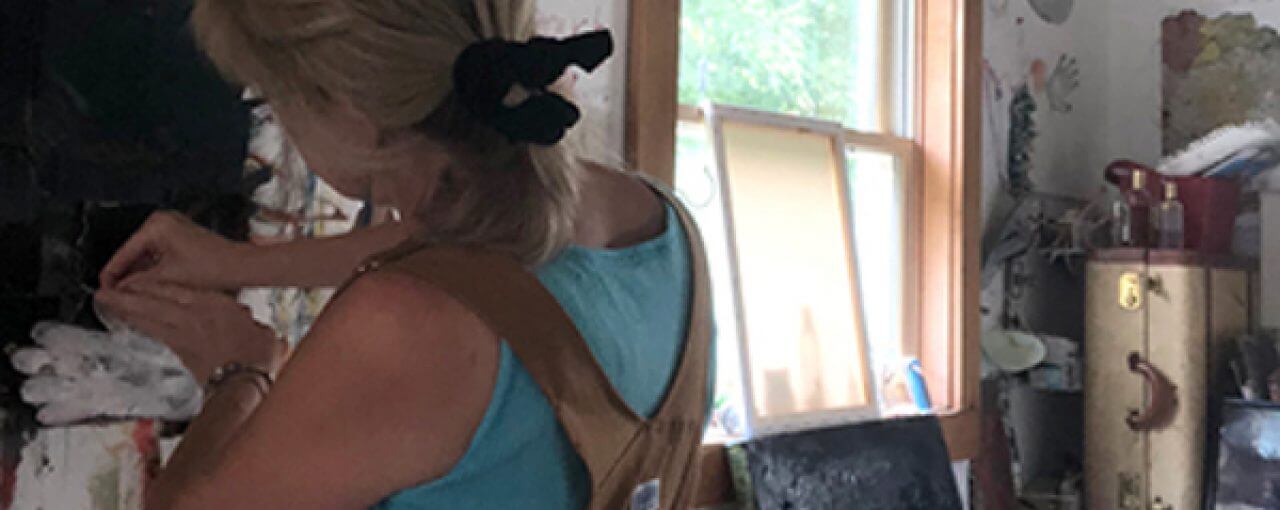See Osborn’s work in WTP Vol. VI #7.
Inside the Studio offers a behind-the scenes peek into the work environments of WTP artists, as well as insight into their creative process within these resonate spaces.
By Jennifer Nelson, WTP Feature Writer
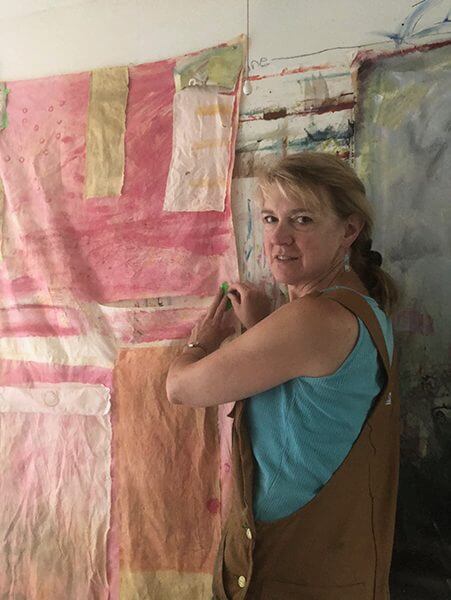
Painter Dorothea Osborn draws inspiration from her home-based studio. She loves its location on the Normanskill Creek in Delmar, New York, and its lightness due to a large window and glass door. She places her grandmother’s rocking chair and a table near the window to sketch, read, and work on the computer. When the weather is nice, she works on the deck or in the yard.
The house is under a bridge, down a huge hill, a short drive away from Albany, in an area known as Trollsville. “Deer, turkeys, coyote, fox, and bear have been sighted,” says Osborn. “No trolls though, accept for the two-troll painting in my living room.”
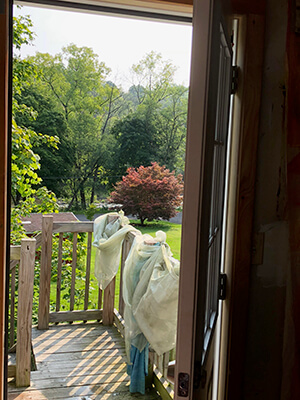
She calls her studio “a visual menagerie” because of all its artwork and materials. In canning jars, bins, carts, and shelves, she stores paint, ephemera, and collected items. In the middle of a room, she paints on an antique wallpaper table. In an old popcorn popper, she cleans her six-inch brushes. She creates large-scale pieces on easels, the floor, or walls. “I even have paintings on window sills, which I recently discovered, let light through and create a very different effect on space and the piece itself. So, things are stored everywhere in my studio.”
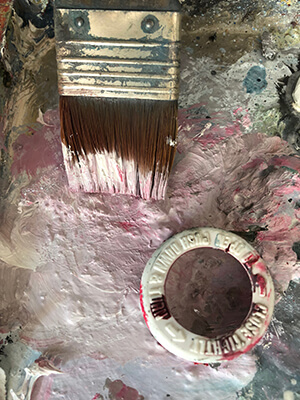
In three smaller rooms, she stores paintings, heavy tools, such as a miter saw, and materials used in encaustics. “Due to ventilation, I only use encaustics in the particular room,” she says.
For materials, she frequents garage and estate sales, as well as antique and salvage shops. “I find the salvage shops to be fascinating and inspiring,” she says. “I once found old mould paper that was dated from the 1800s and created a piece for Albany Historic Foundation, where it was awarded best of show.”
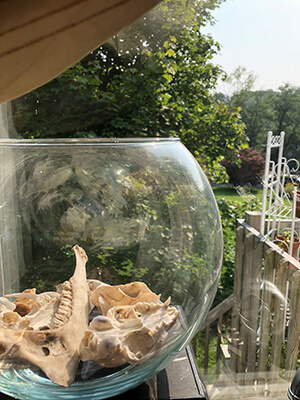
Her day begins at 7 a.m. with making coffee and feeding her three cats, dog, and gecko. She then checks email, responds to inquiries, and attends to teaching duties and applications. By 10:30 a.m., she’s in the studio attacking a painting, meditating on a piece, drawing, reading, or starting new work. “It varies from day-to-day, however, it’s studio time,” she says. At 2 p.m., she breaks for lunch, and then returns to the studio to work until evening. On days she teaches, she’ll return to the studio late, and likes working into the night, listening to the crickets and cicadas.
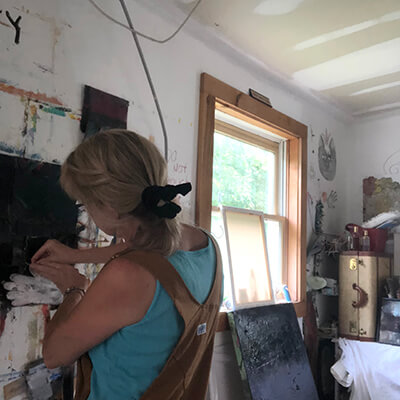
She works on many pieces at one time. Some paintings may take up to ten years to finish. “I keep coming back to them as if they are old friends,” she says. “Some of the best pieces, or pieces that have sold, have been reworked or worked on over the course of time.”
Her works are often inspired by the materials, textures, and colors. “The diverse caches of painterly techniques is also a predominate force in my work,” she says. “I am constantly wondering what will work, what happens if….”
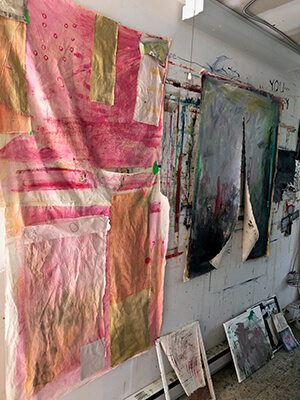
While often falling back on the traditional of turpentine, stand oil, cobalt dryer, and varnish, she also makes her own mixtures—and delights in their aroma, viscosity, colors, and feel. Some of her work involves scraping, pouring, deconstructing, assembling, sewing, layering, and cutting. She pushes the boundaries of painting and sculpture.
“Critics have referred to me as an alchemist,” she says. “I really enjoy working with a variety of mediums, making my own combinations. My work, the process, the materials take me to where the work wants to go.”
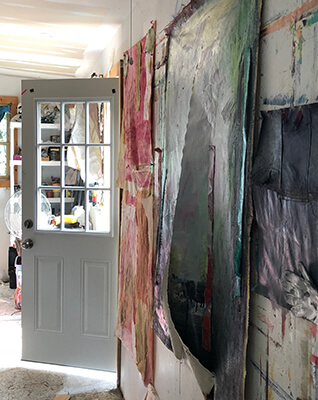
Copyright 2018 Woven Tale Press LLC. All Rights Reserved.

